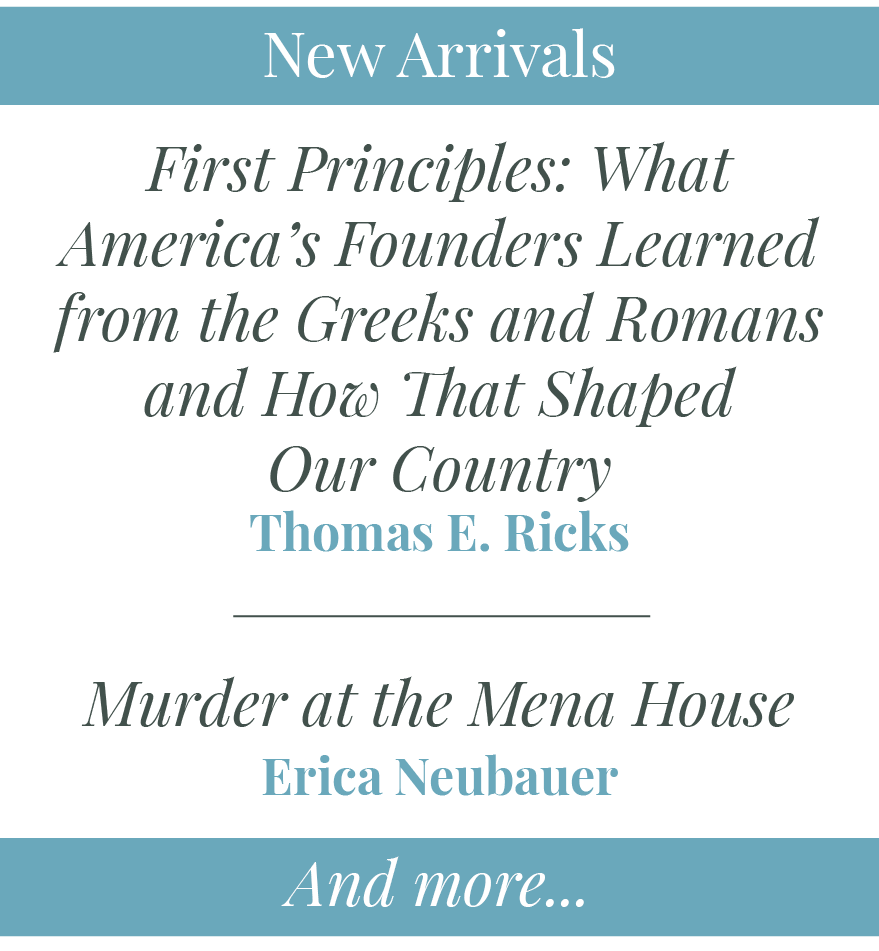public uproar became a challenge to the young science of detection that took five years to solve.
Nearby, on the “Minnesota/Midwest” shelves, is a book with a table of contents that invites you into the backyards of a hundred Minnesota towns with populations “around 100.” If you’ve driven anywhere in our state, you will likely find that you have passed one of these towns or maybe stopped in for lunch. Manhattan Beach, population fifty-seven (in 2011), is a tourist town that once lured mobsters the likes of Baby Face Nelson and Pretty Boy Floyd to its 1929 lodge, and today that same lodge, on Big Trout Lake, invites summer visitors to fish, party, and enjoy a libation at the tiki bar on the beach. (This writer stayed there in midwinter.) Every town gets a fact-filled, two-page spread, and you’ll find that although they’ve seen better days, there’s life in the old towns yet. Check out Little Minnesota: A Nostalgic Look at Minnesota’s Smallest Towns. If you’re a fan of Barbara Kingsolver’s novels, you may have missed High Tide in Tucson: Essays from Now or Never, which is shelved in “Essays and Columns.” Kingsolver begins her essays with stories from her life and always finds deeper meanings beneath each tale or, in the case of the title story, beneath the hermit crab she accidentally packed in her suitcase before she left the Bahamas. When her school librarian assigned Barbara “Dewey Decimals” as a way to spend her study hall (and also get the library books catalogued and shelved), books “snapped me out of my surly adolescence…books that let me live other people’s lives.” What more do we expect from books than to let us live other people’s lives? Or let us in on other people’s knowledge? And there is a very recent addition to the “1666 Authors” shelves—Beatrice Scheer Smith’s daughter Merrily has donated New England Pomona: Portrait of a Nineteenth Century Art Glass, a work years in the making that recounts the history of a little-known glassmaker. Studied and collected by Beatrice Smith and illustrated with magnificent photography, Pomona glass is beautiful and rare. Our Merrily undertook the editing of the book and saw to its publication in 2018. It shares a spot on the shelf with Beatrice’s previous book on an early botanical artist. What talent resides on these shelves! When you wander through our many and various library collections and a title catches your eye, pull out that book and read a paragraph or two. The current pandemic should give us plenty of time for enjoyable solitary pastimes; it will likely not last forever.
abusive father, becomes a soldier, a cook, and, due to his undeniable talents, a banker. Returning to England, he enters the law and the service of Cardinal Wolsey, the Chancellor of England, and then the King’s, where he rises rapidly. Musing over his past, Cromwell thinks, “His sixth life was as Master Secretary, the King’s servant. His seventh, Lord Cromwell, now begins.” Unlike a cat, however, Cromwell will not be accorded nine lives. Rather, resembling a tragic figure, he will fall from on high. Hilary Mantel’s daunting task is to show how the inevitable happens while maintaining an unrelenting dramatic tension over 800 pages. And she succeeds.
Mantel comes from a Catholic working-class family in the north of England. This marginalized background may have both drawn her to Cromwell and helped her portray the ghosts of the past. She rose to become a Dame of the British Empire, and is the first author to have earned two Booker Prizes for the initial volumes of the Cromwell trilogy. We have the entire series in our library. Mantel has written novels set in many locations, as well as a memoir, Give up the Ghost. But her real genius lies in historical fiction. What makes The Mirror and the Light so extraordinary? In my view, two inseparable elements: a charismatic character and a scintillating writing style that brings the past to life. The story is told in a dramatic present tense, as though events are unfolding before us; dialogues become rapier duels, at the end of which we are tempted to say “touché.” The Mirror and the Light plunges us into the nest of vipers that is the court of Henry VIII between 1636 and 1640. The aging king is obese, in pain, nearly impotent, and dangerous. The nobles, though sparring with each other, are united in their disdain for Cromwell—an upstart nobody with only his wits to protect him. Having disposed of Anne Boleyn, Henry hopes for an heir from his third wife, Jane Seymour, to whom Cromwell had been attracted from afar. In addition, religious conflict continues to rage. Henry has required his subjects to sign a loyalty oath swearing allegiance to him as head of the English church. Some of the old nobility wish to return to Catholicism under the rule of his daughter Mary; and Cromwell himself is a “Bible man,” what we would call a Protestant. What makes Thomas Cromwell so compelling a character? First, he is a complex, enigmatic man, a devout religious reformer who does terrible things. While he contrives Anne Boleyn’s fall and brings down others with her, he shows sympathy for Mary as well as for the humble people he takes into his household. Mantel’s writing also brings us close to him. Much of the novel takes place within his head through what could be called an “intimate third person”: Cromwell’s words and thoughts are simply introduced by he without name or quotation marks. He feels tired. Seven years for the king to get Anne. Three weeks to bring her to trial. Three heartbeats to finish it. But still, they are his heartbeats as well as hers. The effort of them must be added to the rest. Finally, Cromwell is sexy. His genius, his surprising moments of kindness, his physical and mental resilience contribute to a surprising attraction. Never 1666 Coffman News January 2021 Page 11 a good-looking man—even his own son says he looks like a “murderer”—he appeals to and understands women, even needing to reject their advances on occasion. So what causes Cromwell’s fall? I will leave it to you, readers, to decide. (Indeed, it is not really a question of how he falls, but how he survives so long.) Yet without revealing too much, it’s “all about women,” as he says. Cromwell will become embroiled in a new search for a queen who may further the political interests of England. But royal marriage is not just an alliance; it is a union between two bodies. Like a master lion-tender, Cromwell becomes complacent with time, forgetting that the royal beast is untamable, driven by his own passions. I’ve done my best to present this novel, but for true eloquence, read it!
mentions the Shaaras in his acknowledgments and says: “I read Michael Shaara’s Killer Angels with awe at how he brought the great battle to life.” Michael’s amazingly prolific son, Jeff, expanded the genre with sixteen novels of his own, covering every major conflict from the American Revolution to the Korean War, six of them on the Civil War alone.
This is not to say I did not enjoy Kofman’s book; I did. I have read a lot of Civil War books, both fiction and nonfiction. General George Meade has always been an enigma to me and seemed to be given short shrift compared to the more famous generals. I wanted to learn more about him. By order of President Lincoln, Meade replaced General Hooker as commander of the Army of the Potomac just four days before the opening day of the pivotal three-day Battle of Gettysburg. In spite of never having commanded a whole army before, Meade acted quickly to gather his scattered forces and move them north as fast as possible toward Pennsylvania to meet Lee’s Army of Northern Virginia massing near Gettysburg. By Kofman’s account and supported by other historians, Meade performed admirably at Gettysburg. He moved his troops effectively to stymy Lee’s threats wherever they appeared. Lee was not accustomed to losing. Meade remained General of the Army of the Potomac until the end of the war. But when Ulysses S. Grant was named commander of all Union armies on March 3, 1864, and chose to lead from the field rather than in Washington, Meade’s decisions were often overruled by Grant (much to the detriment of tens of thousands of Union soldiers, one might argue). It did not help that Meade had powerful political and military enemies that continually maligned him and tried to tarnish his role in the Gettysburg victory. He was not flamboyant and did not seek glory or fame. He was honest and honorable in his dealings with other officers, and he was well liked by his troops. All the same, he bitterly resented the relentless and dishonest criticisms. A common theme throughout the book is his unhappiness about his mistreatment, expressed mostly to himself or to his wife in his almost daily letters to her. A final insult to Meade, a very grievous one in my opinion, was Grant’s failure to invite him to Lee’s surrender ceremony at Appomattox. What draws me to this genre is the accurate depictions of historic events combined with the authors’ imagined personal interactions. So why do I like the Shaara books better? The differences are subtle, but I feel the Shaaras’ fictionalized conversations, thoughts, and feelings of their real-life historic figures are more insightful and creative while remaining true to the context. It’s as if the reader is eavesdropping on private thoughts and conversations. Still, Kofman’s novel is well worth a read, and it goes fast with 106 short chapters plus the dozens of original letters to his wife. It’s headed to our library. |
NewsletterCoffman residents, signup for monthly updates from the Library! Thank you!You have successfully joined our subscriber list. Posts by Year
All
Posts by Month
July 2024
|





